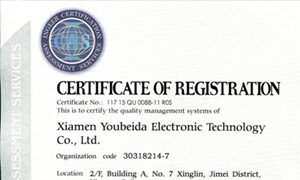
The telecommunications landscape has undergone a radical transformation with the advent of Voice over Internet Protocol (VoIP) technology. Unlike traditional telephony that relies on circuit-switched networks, VoIP converts voice signals into digital data packets transmitted over IP networks. This paradigm shift has unlocked unprecedented advantages for businesses and individuals alike.
VoIP (Voice over Internet Protocol) has revolutionized business and personal communication by enabling voice calls over the internet instead of traditional phone lines. This technology offers cost savings, flexibility, and advanced features like video conferencing, call forwarding, and integration with CRM systems.
Core Benefits of VoIP Technology
Cost Efficiency: By leveraging existing internet infrastructure, VoIP eliminates per-minute charges and reduces international call costs by up to 90% compared to PSTN services.
Scalability: Cloud-based VoIP solutions allow businesses to add lines or features instantly without hardware upgrades.
Feature-Rich Solutions: Advanced functionalities include:
Unified communications (integrating voice, video, and messaging)
AI-powered call analytics
Seamless CRM integration (e.g., automatic call logging in Salesforce)
The Critical Role of VoIP Headsets
A key component of a seamless VoIP experience is a high-quality VoIP headset. Designed for clarity and comfort, these headsets minimize background noise and provide crisp audio for calls. Many models feature noise-canceling microphones, wireless connectivity (Bluetooth or DECT), and ergonomic designs for prolonged use.
To fully harness VoIP’s potential, specialized headsets address key challenges in digital voice communication:
Audio Precision: Wideband audio (HD Voice) captures frequencies up to 7kHz for lifelike clarity.
Noise Management: DSP (Digital Signal Processing) technology suppresses background noise in busy environments.
Ergonomic Designs: Features like breathable ear cushions and adjustable headbands combat fatigue during marathon conference calls.
Industry-Specific Applications
Contact Centers: Noise-canceling models with boom microphones (e.g., Jabra Engage 75) improve agent efficiency.
Remote Teams: Wireless DECT headsets enable mobility within 100-meter radiuses.
Trading Floors: Multi-connectivity headsets handle simultaneous VoIP and mobile calls.
Future Trends
The convergence of VoIP with 5G and WebRTC will further enhance mobility and call quality. Meanwhile, AI-driven headsets are evolving to offer real-time language translation and voice biometrics for authentication.
As hybrid work becomes the norm, VoIP paired with professional-grade headsets will remain indispensable tools for global collaboration. Enterprises investing in these technologies today position themselves for tomorrow’s communication demands.
Businesses, especially in customer service and remote work, rely on VoIP headsets to enhance productivity. Popular brands like Jabra, Plantronics, and Sennheiser Inbertec offer specialized options, from USB-connected headsets for desk setups to mobile-friendly Bluetooth models.
As VoIP adoption grows, investing in a reliable headset ensures professional communication, whether for virtual meetings, sales calls, or support interactions. With the right setup, VoIP technology empowers teams to collaborate efficiently across borders.


